8 expert-approved landscape lighting techniques to show off your garden when the sun goes down
From highlighting to silhouetting, these are the clever lighting techniques garden designers always use in their schemes
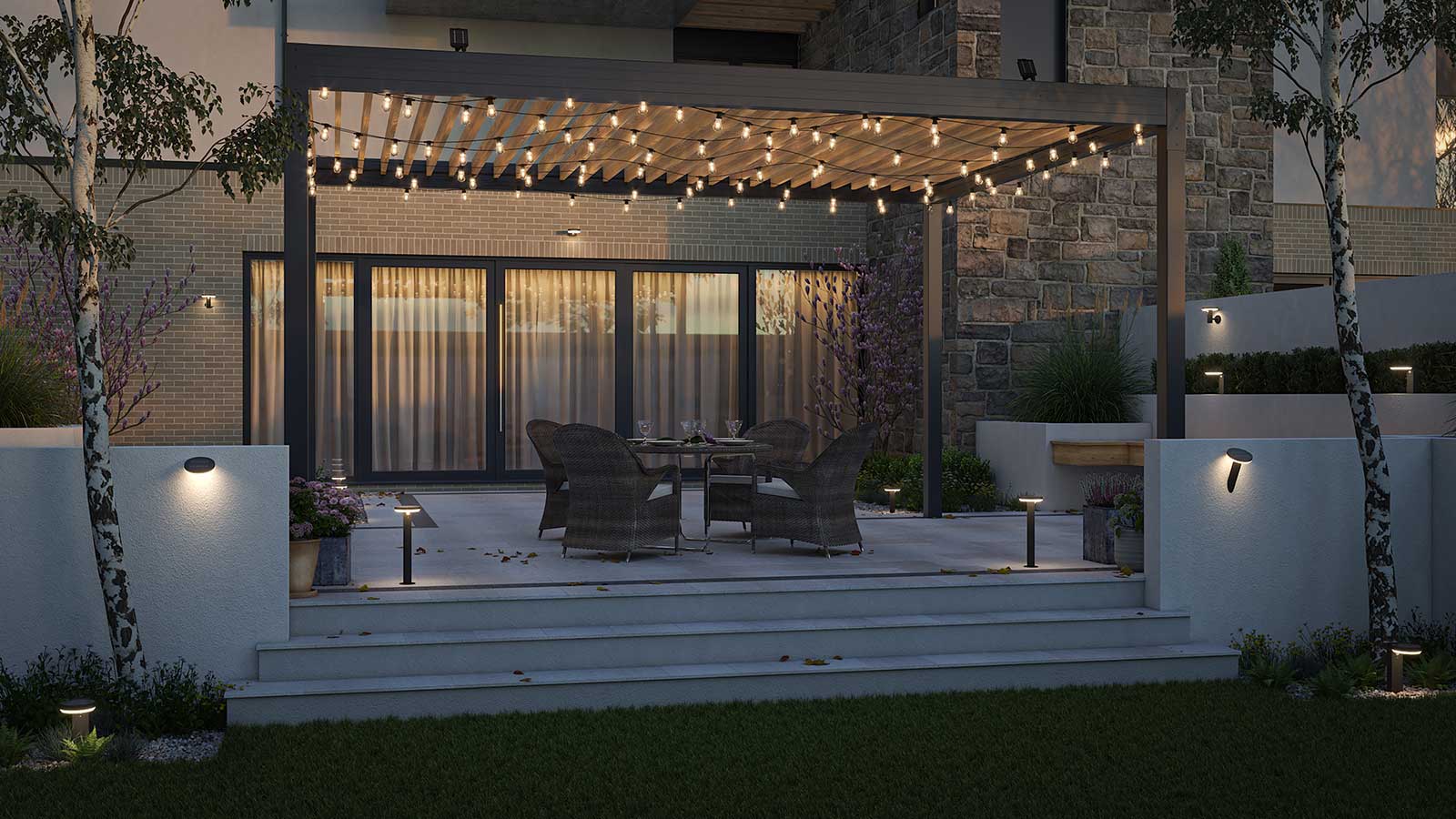
The best landscape lighting techniques can be used to design a creative look for your garden at night that will turn it into an enchanting space. There are several tricks that are easy to master and they work by accentuating the features you want to draw attention to, and playing down those you don't.
Once you know where to position landscape lighting, the trick is to use the right technique to make your lighting plan as effective as possible. Whether you opt for washing light down a wall, uplighting a favourite tree or creating interesting shadows, these tried-and-tested techniques are used by lighting designers when planning their schemes to create a natural look that doesn't feel contrived.
It's worth pointing out that unless you plan to use solar-powered lights you will need an outdoor power supply for these landscape lighting techniques. It's a good idea to work out a rough plan of your proposed design that takes into account the type of lighting you envisage for each area of the garden.
1. Highlighting
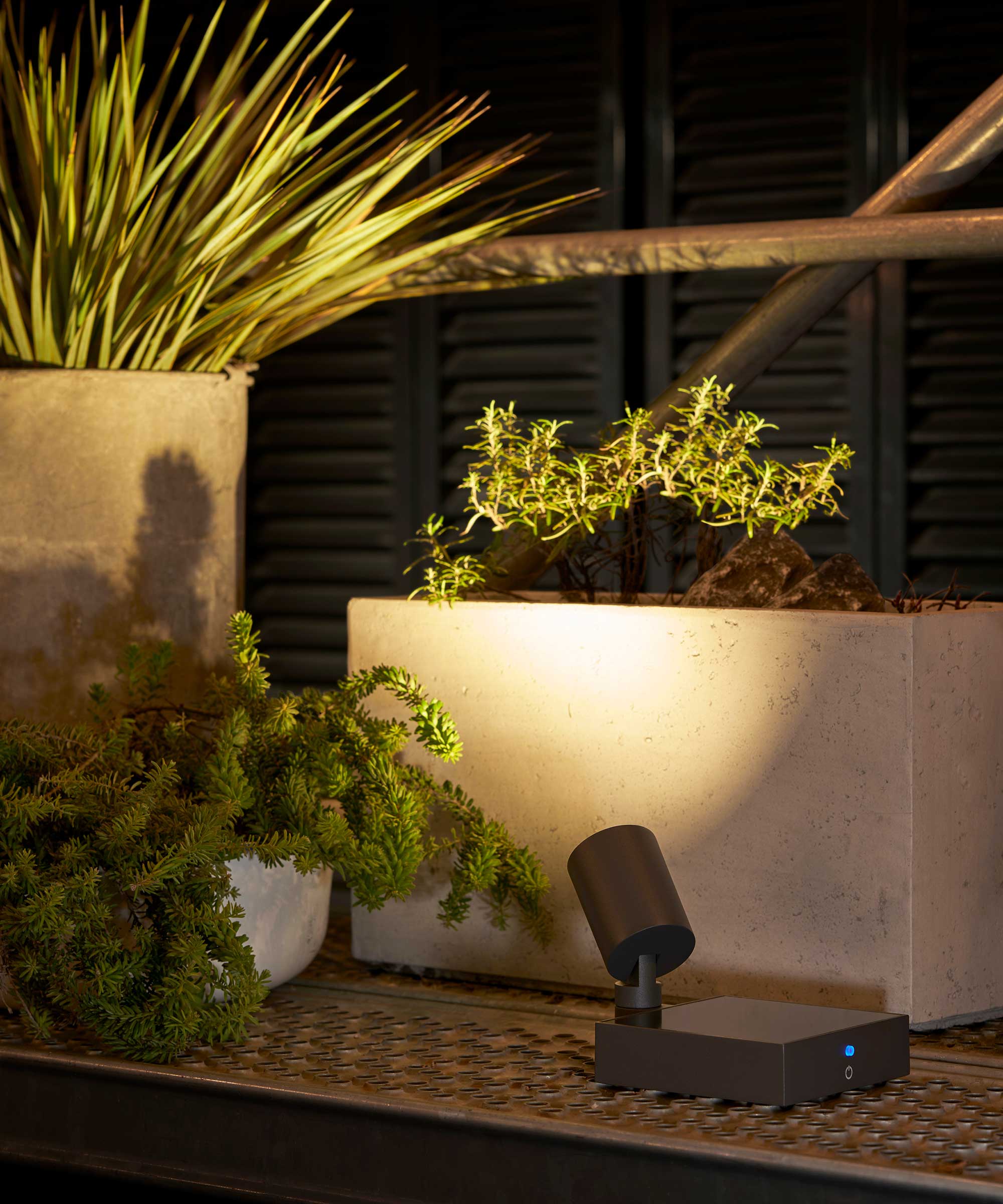
"Highlighting is a simple method that uses directional lighting to draw attention to key features, such as a piece of sculpture or a favourite tree," says lighting expert James Kendall, operations director at KES Lighting & Home.
This targeted form of garden lighting ideas often uses a spotlight on a single feature you want to show off. For this reason it tends to be confused with spotlighting, which uses a directional spotlight mounted high on a wall and angled in and down towards the object.
The term highlighting can also be used in the context of uplighting, and even to describe general techniques for landscape lighting.
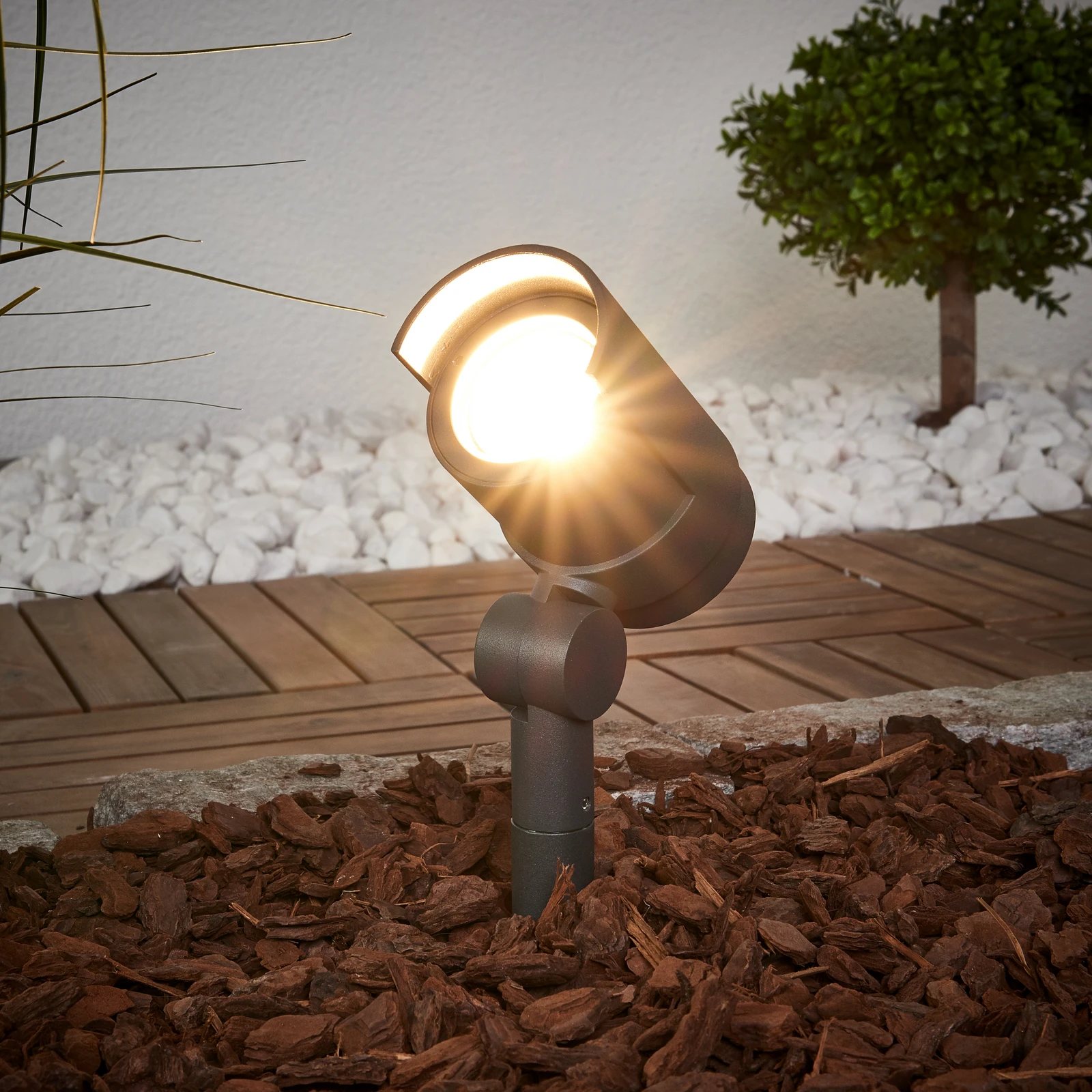
Made from aluminium, this LED-powered ground spike light is ideal for highlighting a favourite tree or plant. It can be inserted into the ground thanks to the long spike and easily moved to a different location as and when required. The angle of the head can also be adjusted to create the best effect.
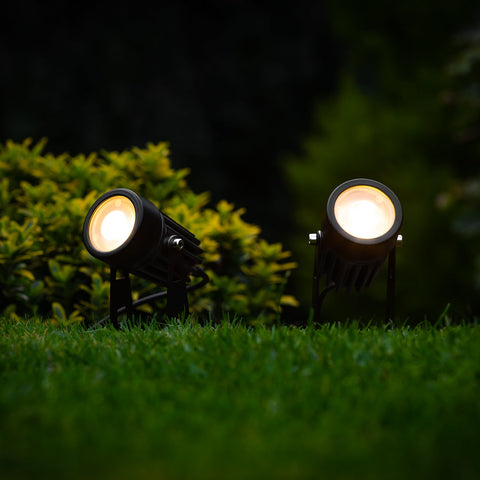
If you don't have a power source, these stylish warm white, solar-powered spotlights are a good buy. They can light a distance of up to 25 metres and there is 4.5m of cable between each spotlight so they don't have to be placed directly next to one another. Provides 10 hours of light after a full day of charge.

This is more of an investment buy, but one that gives you multiple options for your outdoor lighting scheme. Part of the popular Philips Hue range, this set comes with a base unit, extension and 4 Lily spotlights in black. They can be voice and app controlled, offer 16 million different colour options, a timer and can be dimmed.

As operations director at KES Lighting & Home, James Kendall is well placed to offer expert guidance on all aspects of home lighting. James understands just how transformative great garden lighting can be, and has the experience and expertise to transform any space.
2. Backlighting
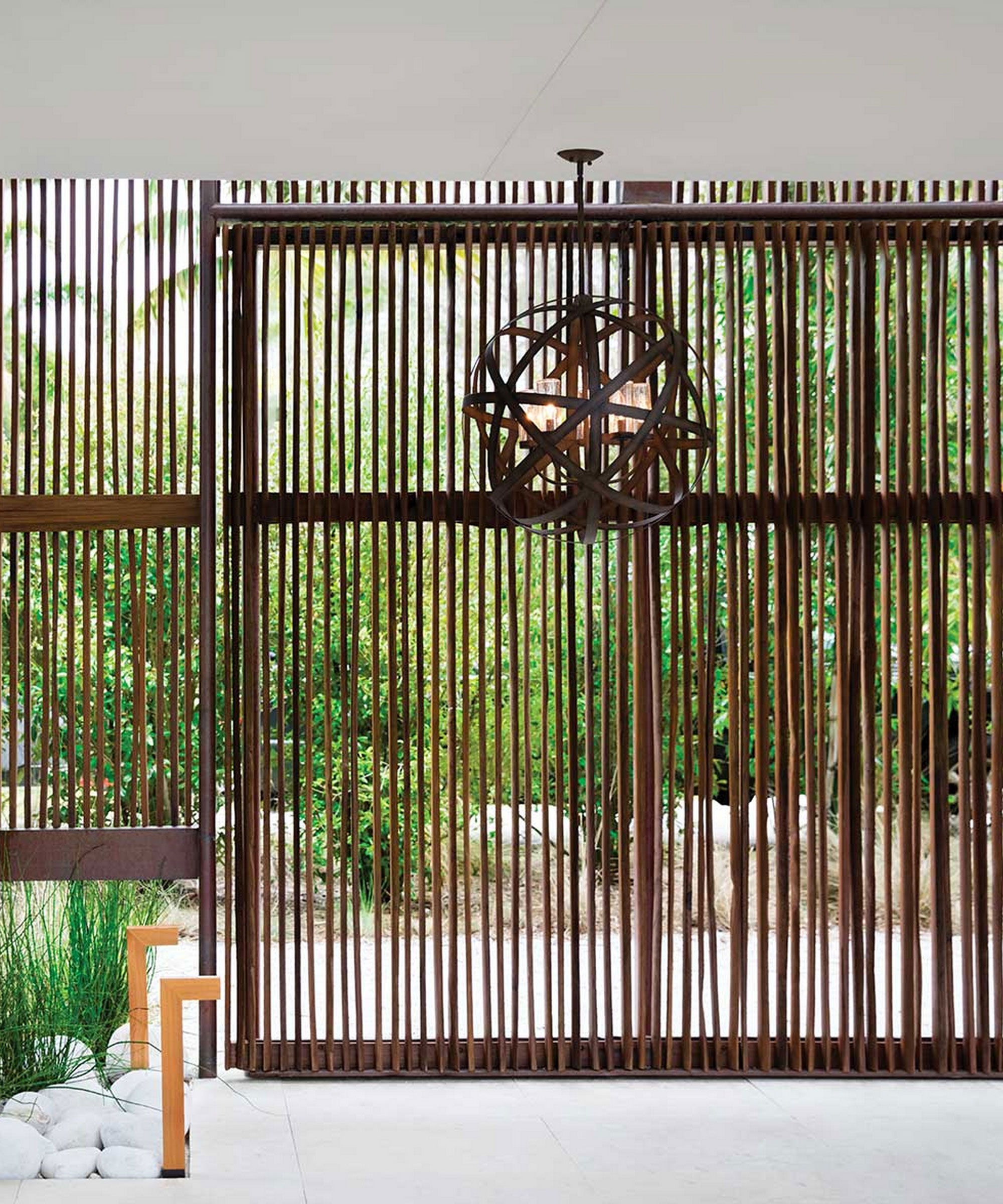
Backlighting is one of the most popular techniques for landscape lighting to create interesting shadows. It's used to throw elements in the foreground, such as plants or sculpture, into relief and creates dramatic shadow patterns on a wall, decorative screen or other surface behind.
Bring your dream home to life with expert advice, how to guides and design inspiration. Sign up for our newsletter and get two free tickets to a Homebuilding & Renovating Show near you.
Shadows in the night garden add a touch of intrigue and backlighting is a great way to subtly enhance key features without overwhelming the garden with bright lights that dominate the space.
A minimal approach like this helps to create a more visually appealing designer look after dark and helps to make garden lighting look expensive.
3. Uplighting
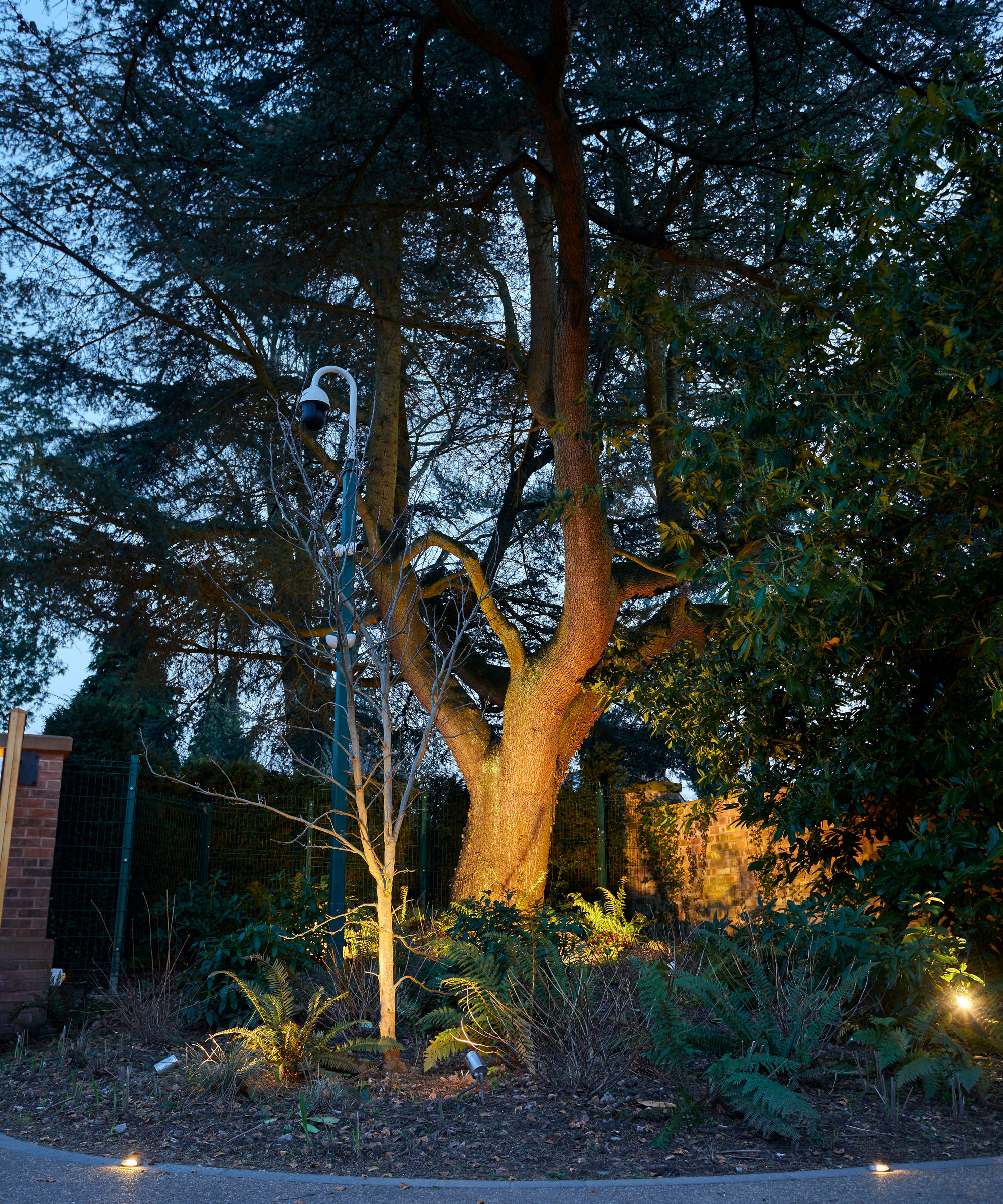
"Uplighting is one of the most popular landscape lighting techniques," says lighting expert Jamie Moxie from Dusk Lighting. "In a dark space like the night garden a standalone feature such as a beautiful old tree or a sculpture benefits greatly from an angled light. It acts like a spotlight, placing the feature centre stage in your garden."
Uplighting is particularly effective for multi-stemmed trees or larger plants and architectural elements, as well as bringing scale and a sense of theatre to the space.
"Uplighting from the base of trees highlights the structure of the trunk and the spread of branches, casting interesting shadows and adding depth,' says James Kendall. "Small ground-level spotlights gently bring out form and texture without overpowering the space."
Mini uplighters are inconspicuous during the day but can be angled to reveal the shape and texture of plants, walls, screens and other decorative elements at night to create a bold theatrical effect.
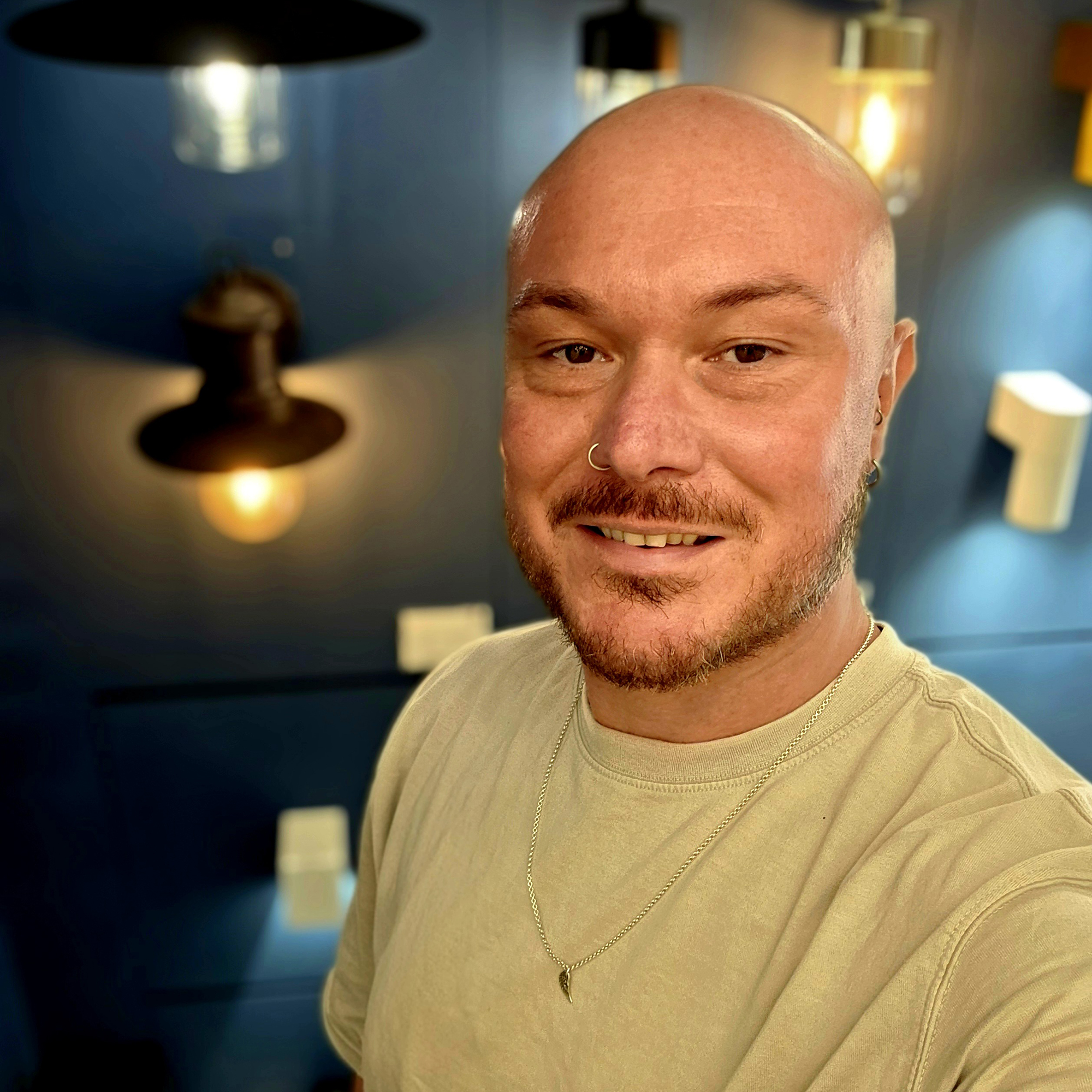
Jamie Moxey has worked at Dusk Lighting since 2017, focusing on business development and eCommerce. He collaborates with interior designers, architects, and homeowners to deliver considered lighting solutions across a wide range of projects.
4. Downlighting
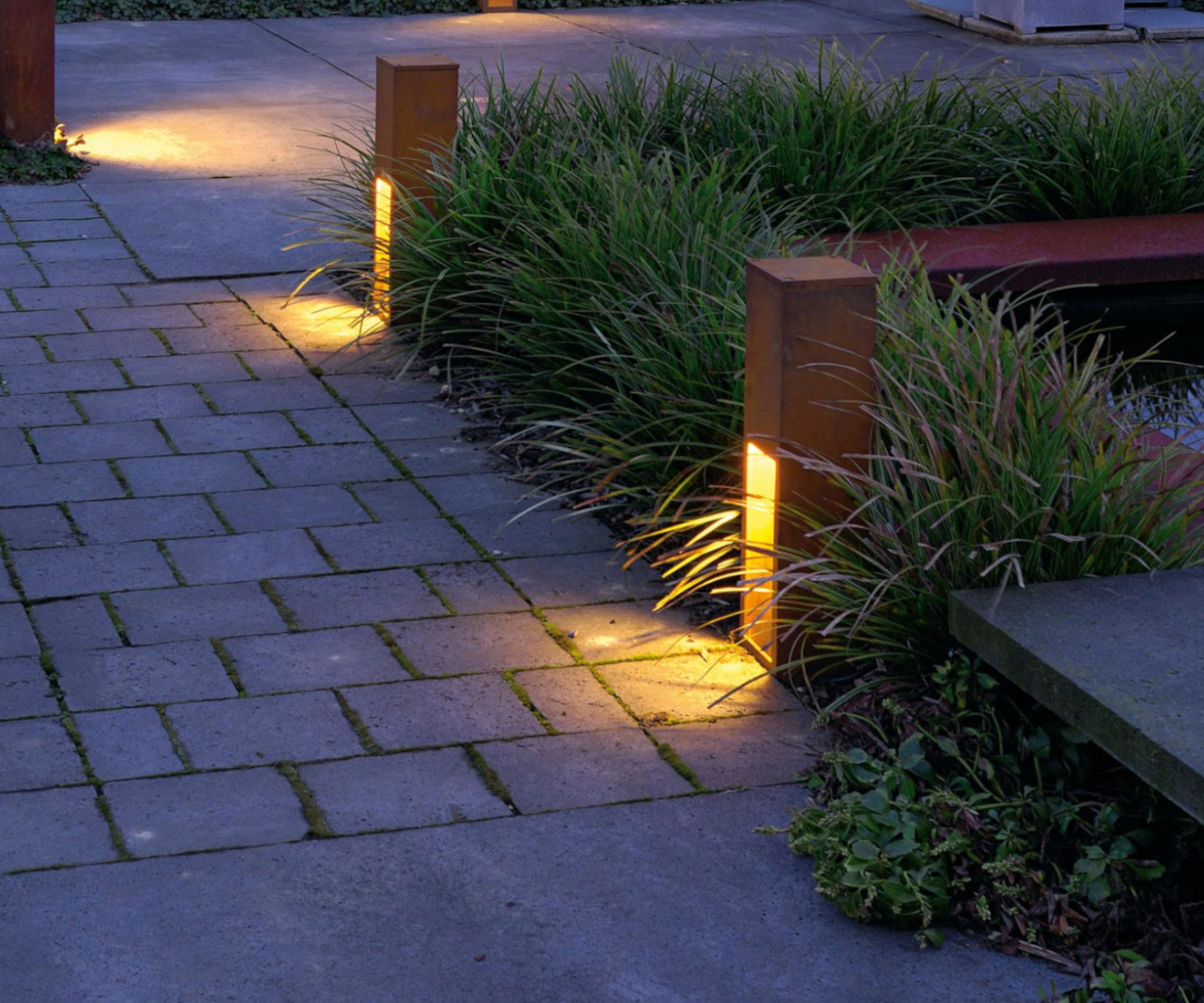
Outdoor downlighting is one of the easiest techniques for landscape lighting to get right. It has the same effect as moonlight, illuminating trees and other features with soft, natural looking light. The good news is it's a quick and budget-friendly way to transform the night garden with light.
Put simply, downlighting uses lamps that are angled down, not up. When you place lamps above an object instead of below it, the result imitates natural light. Even better if the lamps are concealed, so all you see is a warm glow without knowing where it comes from.
This is one of the best landscape lighting techniques for patio lighting ideas, decks, and doorways, as well as to pick out particular plants or features. It's also the most common choice for garden path lighting ideas.
You can also use small downlights for detailed projects like attaching lights to the bottom of a garden bench to add definition with a subtle glow.
5. Wall washing and grazing

Landscape lighting techniques like washing and grazing are used to evoke an atmosphere in outdoor spaces at night, specifically by accenting walls. These techniques are achieved through similar methods but produce different effects.
While wall grazing highlights the texture of a wall through shadows, wall washing enhances its smoothness by eliminating shadows. You can place outdoor wall lights at the bottom or the top of a wall, depending on the effect you want to create.
"Washing spreads a gentle light across a flat surface," says design expert Keely Smith of JD Elite interiors. "It’s great for bringing out texture in stone or brick without creating harsh shadows. I use it a lot on outdoor walls or the side of a raised garden bed."
Jamie Moxie is a big fan of wall washing too: "Another one of our favourite techniques is washing a space with light. Usually positioned along a wall or hedge this is a technique where a number of lights are spread across a space filling it with an ambient glow."
Meanwhile, grazing refers to the effect achieved by setting a light close to or along a garden wall. It can be angled to illuminate an area, and reveal texture and form, forcing the beam of light to hit the wall at a narrow angle. Shadows can be deepened or diminished by moving the lights closer to or further from the wall.
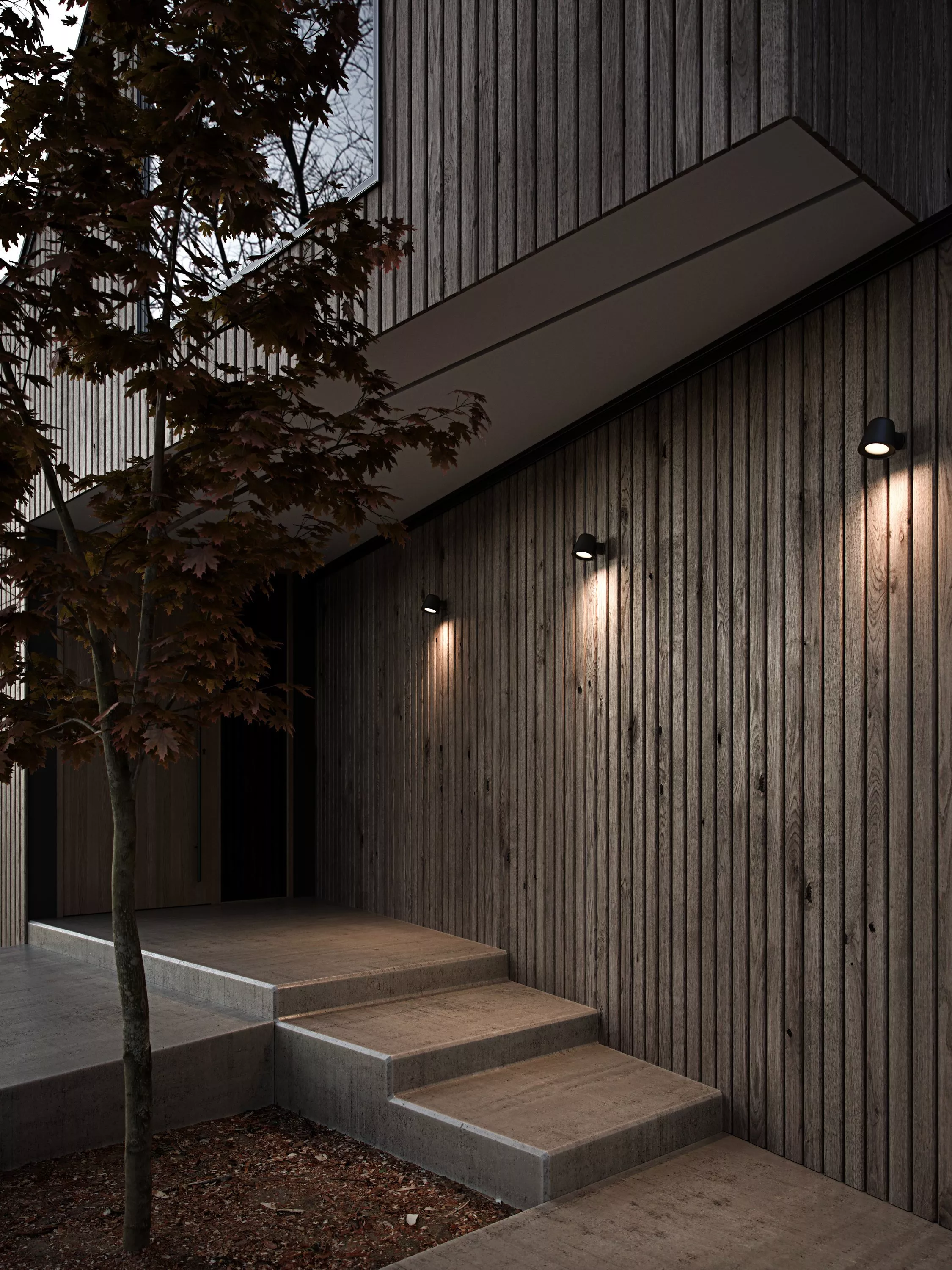
Customers have given this metal wall light a 5-star rating and we love how it delivers a designer look for an affordable price. It's made from aluminium and has an on-trend matt finish for a stylish look. IP44 rated so it's safe for outdoor use, it needs to be wired into the mains.

This energy-efficient design disperses light from both ends of the fitting to wash light up and down the wall. Mains powered, it has an IP65 rating and is made from sturdy aluminium an UV-resistant acrylic. Available in a choice of black, anthracite and grey.

If you want to make more of a feature of your wall lights, this galvanised steel design will stand out from the crowd. It's inspired by the lanterns that were traditionally found on ship sterns, giving it a classic feel that won't date. IP44 rated, it requires wiring in.

Keely Smith is the lead interior designer at JD Elite interiors. She has over 10 years' experience working with design studios, private companies, and as a freelance designer. Keely specialises in creating custom, client-centred spaces that blend functionality with timeless style.
6. Silhouetting
Silhouetting is one of the techniques for landscape lighting that can turn even the simplest plant into a stunning focal point. If upward facing lights are placed at a certain angle, they can cast a shadow onto a wall or surface, leaving you with a beautiful silhouette feature.
It works by placing a spread light between the feature and the adjacent structure to create a silhouette against a soft background. "It's another creative technique that creates a striking contrast," says James Kendall. "By placing a light source behind a plant or object, you can cast its shape in shadow against a wall or backdrop."
This type of lighting works best if you have features with interesting shapes in your garden such as architectural trees like Japanese maples, plants with sculptural foliage such as ferns, or decorative sculptures.
7. Mirroring
Mirror lighting is a technique that involves illuminating a background scene to reflect it into a nearby water feature. The technique takes advantage of the reflective surface of the dark water at night to create visual interest.
A single source of illumination is usually enough to bathe a pool or pond area in soft light and produce a perfect reflection in the black unlit surface of the water. The lighting feature should be positioned between the water and the object.
It's best to avoid downlighting as the light source will be reflected in the water, causing glare.
8. Accent lighting

Try outdoor accent lighting to create a mood, enhance the look of your garden, and transform ordinary features into something special at night. "Accent lighting is used to draw the eye to smaller, decorative elements like favourite garden planter ideas or water features, adding charm without dominating the scene," explains James Kendall.
Accent lighting is perfect for highlighting the features you think should stand out at night . "Spotlights allow you to direct light exactly where you want it," says lighting expert Adam Wilkins from Lighting Legends. "Whether it's a water feature or a planting scheme, accent lighting will brighten up the space without overwhelming the rest of the garden. Ideally it's best to stick to warm lighting for this sort of effect."

Adam Wilkins is co-founder and managing director of Lighting Legends, a UK-based outdoor lighting company specialising in durable, design-led lighting solutions.
FAQs
What is the moonlight technique in landscape lighting?
The moonlight technique in landscape lighting is one of the most natural ways to light a garden, aiming to mimic the soft gentle glow of the moon to create a magical effect.
"The moonlight technique in landscape lighting is designed to replicate the effect of natural moonlight," explains James Kendall, operations director at KES Lighting & Home. "This is achieved by mounting lights high in trees and angling them down through the branches.
"The resulting interplay of light and shadow creates an effect that is both mood-enhancing and functional, making it a favourite technique for adding atmosphere at night."
"Moonlighting is a beautiful idea when executed well," agrees Jamie Moxie from Dusk Lighting. "It’s important to be strategic about the light placement, as the aim is tranquility.
"If downward lights are positioned in trees or high up on walls they can illuminate lawns and pathways perfectly. Include shadows to replicate how moonlight would filter organically through into a space."
Getting the right mix of landscape lighting techniques will show off your key garden features, ensuring you get to enjoy views of your outdoor space after dark.
It will add to your overall garden landscaping costs, but if your budget is tight it's relatively easy to add lighting to your garden landscaping ideas in stages, rather than all in one go.

Lifestyle journalist Sarah Wilson writes about garden design and landscaping trends. She has studied introductory garden and landscape design, and also has an RHS Level 2 qualification in the Principles of Plant Growth and Development. Sarah is a regular contributor to Homes & Gardens and Livingetc, and has also written for Modern Gardens, Country Living, and Country Homes & Interiors magazines.
